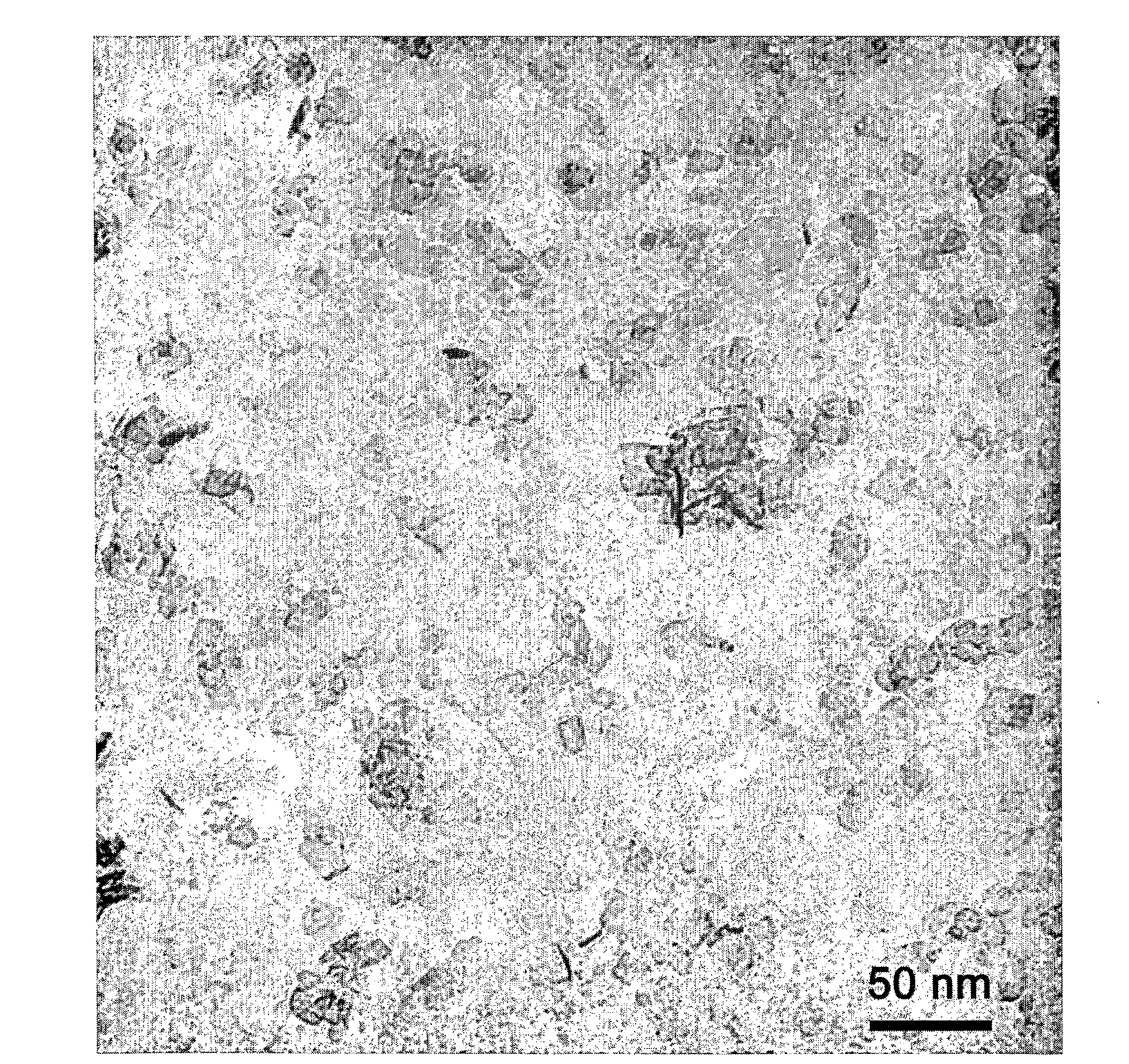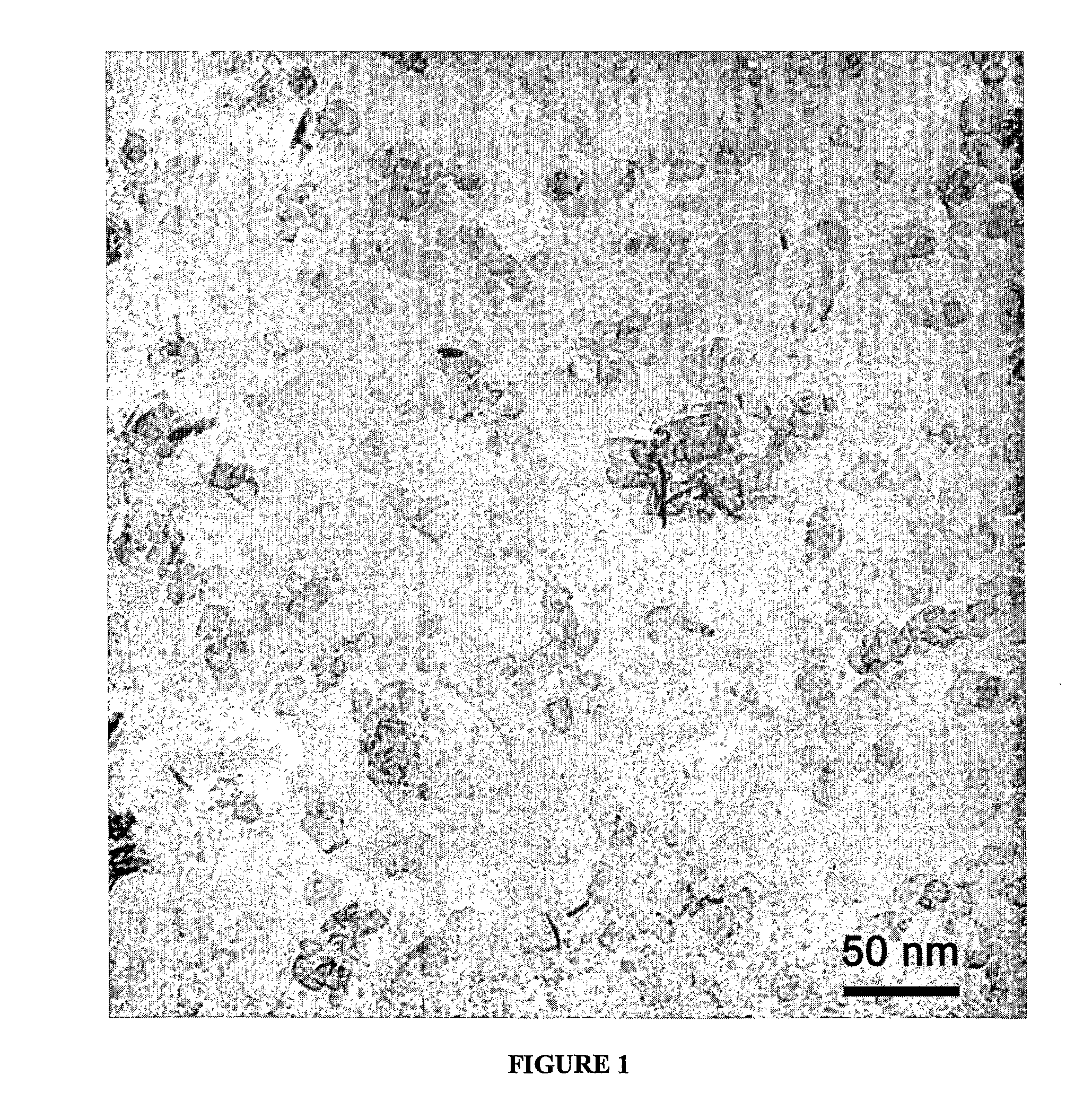Method for Making a Material
- Summary
- Abstract
- Description
- Claims
- Application Information
AI Technical Summary
Benefits of technology
Problems solved by technology
Method used
Image
Examples
example 1
[0100]A composition 20 wt % Ce0.53Zr0.37Pr0.06La0.04Ox on alumina was prepared in the following manner. Cerium nitrate hexahydrate, zirconium carbonate, lanthanum nitrate hexahydrate and praseodymium nitrate hexahydrate were dissolved in the appropriate proportions to make 4.5 g of Ce0.537Zr0.375La0.025Pr0.063O, in ˜15 g water. 27 g of boehmite (aluminum hydroxide) plate-shaped nanoparticles (Sasol, Dispal 23-N4 80) was dispersed in 200 g water. FIG. 1 shows a TEM photomicrograph of such a plate-shaped nanoparticle. The salt solution was added to the boehmite dispersion, then 16 g of carbon black (Raven 850, Columbian Chemicals) and mixed with a high-speed stirrer. 47 g of surfactant (Erunon LA4) was added and mixed. This final mixture was heated slowly to a temperature of 500° C., and then higher temperature testing was carried out for 2 h at 1000° C.
Following the heat treatment to 1000° C., XRD showed a ceria-containing phase and alumina. TEM showed the structure consisted of nano...
example 2
[0101]A composition 20 wt % Ce0.53Zr0.37Pr0.06La0.04Oxon alumina was prepared in a similar manner to example 1, except that polyethylene glycol was used instead of LA4 surfactant.
Following the heat treatment to 1000° C., XRD showed a ceria-containing phase and alumina. TEM showed the structure consisted of nano-sized particles of the catalyst phase dispersed throughout the alumina. The surface area was 103 m2 / g, and the pore volume for pores between 2 nm and ˜200 nm was 0.89 cc / g.
example 3
[0102]A composition 20 wt % Ce0.53Zr0.37Pr0.06La0.04Ox on alumina was prepared in a similar manner to example 1, except that DISPAL 18BP was used instead of X-O.
Following the heat treatment to 1000° C., XRD showed a ceria-containing phase and alumina. TEM showed the structure consisted of nano-sized particles of the catalyst phase dispersed throughout the alumina. The surface area was 87.5 m2 / g, and the pore volume for pores between 2 nm and ˜200 nm was 0.66 cc / g.
PUM
| Property | Measurement | Unit |
|---|---|---|
| Grain size | aaaaa | aaaaa |
| Temperature | aaaaa | aaaaa |
| Temperature | aaaaa | aaaaa |
Abstract
Description
Claims
Application Information
 Login to View More
Login to View More - R&D
- Intellectual Property
- Life Sciences
- Materials
- Tech Scout
- Unparalleled Data Quality
- Higher Quality Content
- 60% Fewer Hallucinations
Browse by: Latest US Patents, China's latest patents, Technical Efficacy Thesaurus, Application Domain, Technology Topic, Popular Technical Reports.
© 2025 PatSnap. All rights reserved.Legal|Privacy policy|Modern Slavery Act Transparency Statement|Sitemap|About US| Contact US: help@patsnap.com


